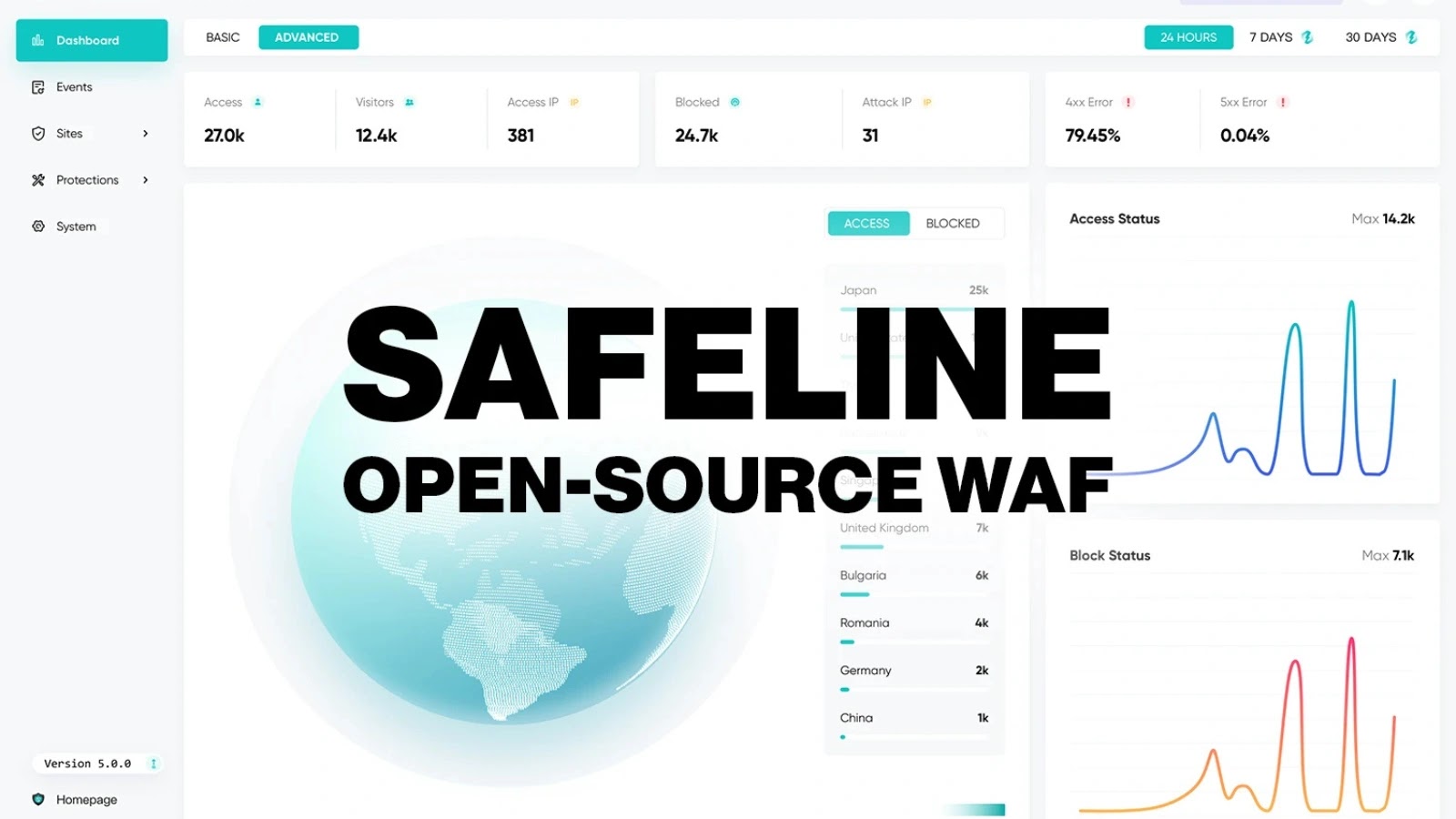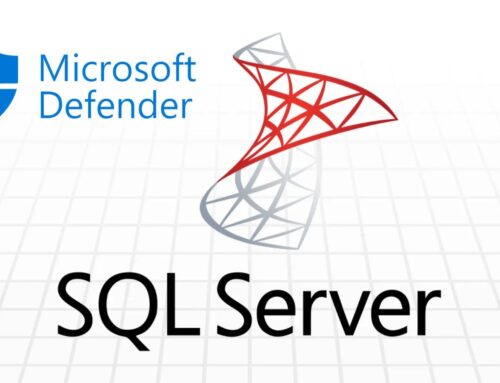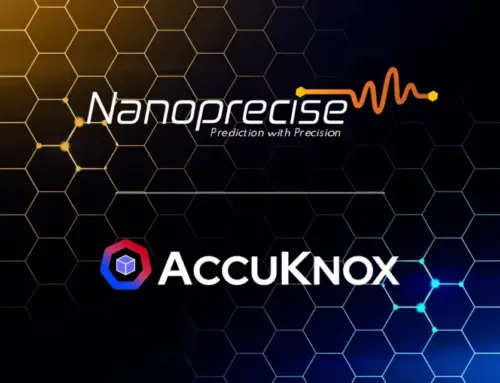
SafeLine: A Free Zero Trust Web Application Firewall for 2026
SafeLine: A Free Zero Trust Web Application Firewall for 2026
In a landscape where cyber threats escalate daily, the security of web applications is paramount for organizations of all sizes. From vast multinational corporations managing intricate digital infrastructures to individual tech enthusiasts running burgeoning homelabs, the imperative for robust protection against data breaches, service disruptions, and reputational damage is universal. The constant barrage of sophisticated cyberattacks targeting web application vulnerabilities necessitates a proactive and impenetrable defense. This is precisely where a Web Application Firewall (WAF) becomes not just a recommendation, but an indispensable component of any effective cybersecurity strategy.
The financial implications of compromised server resources, data exfiltration, and operational downtime can be catastrophic. Recognizing this critical need, the cybersecurity community often seeks solutions that are both powerful and accessible. This article delves into SafeLine, a promising new initiative set to deliver a free Zero Trust Web Application Firewall by 2026, offering a vital layer of defense against evolving threats. Our insights draw from a key announcement on Cyber Security News, highlighting the significance of this development.
The Imperative for Web Application Firewalls (WAFs)
Web applications are prime targets for cyber criminals due to their direct exposure to the internet and their role in handling sensitive data. Without a WAF, applications are vulnerable to a wide array of attacks that exploit common weaknesses in code or configuration. Think of a WAF as a security guard positioned in front of your web applications, filtering out malicious traffic before it can reach your servers.
Traditional network firewalls operate at the network layer, primarily blocking traffic based on IP addresses and ports. While essential, they lack the granular understanding of HTTP/S traffic needed to detect and mitigate application-layer attacks. A WAF, by contrast, operates at Layer 7 (the application layer) of the OSI model, understanding the nuances of web protocols and application-specific traffic patterns. This enables it to identify and block threats such as:
- SQL Injection: Attacks that insert malicious SQL code into input fields to manipulate database queries.
- Cross-Site Scripting (XSS): Attacks that inject malicious scripts into trusted websites, which are then executed by unsuspecting users. For more on XSS, see CVE-2023-38831.
- Broken Authentication and Session Management: Exploiting weak authentication mechanisms or session token vulnerabilities.
- Insecure Deserialization: Where insecure deserialization of data allows an attacker to execute arbitrary code.
- Broken Access Control: Flaws that allow users to access functionality or data they shouldn’t.
The constant evolution of these attack vectors underscores the necessity for an adaptive and intelligent defense mechanism like a WAF.
Understanding Zero Trust Principles in WAFs
The concept of Zero Trust is a fundamental shift in network security, moving away from the traditional perimeter-centric model. Instead of “trust but verify,” Zero Trust operates on the principle of “never trust, always verify.” This means that no user, device, or application is inherently trusted, regardless of their location inside or outside the network perimeter. Every access request is authenticated, authorized, and continuously monitored.
When applied to WAFs, a Zero Trust approach means that instead of relying on a whitelist of “known good” traffic or a blacklist of “known bad” signatures, the WAF continuously scrutinizes every single request. This involves:
- Strict Identity Verification: Ensuring that every user and service accessing the application is who they claim to be.
- Least Privilege Access: Granting users and applications only the minimum access necessary to perform their functions.
- Micro-segmentation: Isolating application components and resources to limit the lateral movement of threats.
- Continuous Monitoring and Validation: Constantly analyzing traffic patterns and user behavior for anomalies that might indicate a compromise.
A Zero Trust WAF, like the promised SafeLine offering, proactively defends against unknown threats (zero-day exploits) by disallowing anything that hasn’t been explicitly permitted, rather than just blocking known malicious patterns. This is a significant advantage over signature-based WAFs that can be bypassed by novel attack techniques.
SafeLine: A Free Solution by 2026
The announcement of SafeLine as a free Zero Trust Web Application Firewall by 2026 represents a significant development for the cybersecurity community. While details are still emerging, the emphasis on “free” and “Zero Trust” highlights a commitment to democratizing advanced web application security.
The provision of a free, enterprise-grade security tool can dramatically level the playing field, allowing smaller organizations, educational institutions, and individual developers who may lack substantial cybersecurity budgets to implement robust defenses. This accessibility is crucial given the pervasive nature of web application threats, which do not discriminate based on organizational size.
Key benefits anticipated from SafeLine’s approach include:
- Enhanced Posture Against Zero-Day Exploits: By adopting Zero Trust principles, SafeLine aims to offer superior protection against novel threats, making it more resilient than traditional signature-driven WAFs. This is particularly important for vulnerabilities like those seen in CVE-2023-28252, which often lack immediate signatures.
- Reduced Barrier to Entry: The “free” model removes a significant financial hurdle for many entities, fostering a more secure online ecosystem overall.
- Scalability and Flexibility: While specifics await, a modern WAF solution would ideally integrate seamlessly across various environments, from on-premise deployments to multi-cloud architectures.
Remediation Actions and Best Practices for Web Application Security
Regardless of the WAF solution you choose, a comprehensive approach to web application security integrates multiple layers of defense. Here are critical remediation actions and best practices:
- Patch Management: Regularly update all software, frameworks, libraries, and operating systems used in your web applications. Many attacks exploit known vulnerabilities, such as those listed in CVE-2023-34360.
- Secure Coding Practices: Implement secure coding guidelines (e.g., OWASP Top 10) from the initial development stages. Train developers on secure coding principles and conduct regular code reviews.
- Input Validation: Rigorously validate all user input to prevent injection attacks (SQL, XSS, Command Injection).
- Strong Authentication and Authorization: Enforce strong, multi-factor authentication (MFA) and implement granular access controls based on the principle of least privilege.
- Regular Security Audits and Penetration Testing: Conduct frequent vulnerability assessments and penetration tests to identify weaknesses before attackers do.
- Encryption: Encrypt all sensitive data both in transit (TLS/SSL) and at rest.
- Web Application Firewall (WAF): Deploy and properly configure a WAF to filter malicious traffic and protect against common application-layer attacks. Consider exploring options compatible with Zero Trust principles.
- Logging and Monitoring: Implement comprehensive logging for all application activity and continuously monitor logs for suspicious patterns or anomalies.
- API Security: Secure your APIs with proper authentication, authorization, and rate limiting, as APIs are increasingly targeted.
Relevant Tools for Web Application Security
A layered security approach also benefits from the strategic use of various tools:
| Tool Name | Purpose | Link |
|---|---|---|
| OWASP ZAP | Dynamic Application Security Testing (DAST) for finding vulnerabilities in running web applications. | https://www.zaproxy.org/ |
| Burp Suite Community Edition | Web vulnerability scanner and penetration testing tool. | https://portswigger.net/burp/communitydownload |
| Acunetix | Automated web vulnerability scanner (commercial, but widely used). | https://www.acunetix.com/ |
| Nessus | Vulnerability scanner for identifying software flaws, configuration issues, and more. | https://www.tenable.com/products/nessus |
| ModSecurity | Open-source WAF engine that provides a ruleset for protecting web applications. | https://www.modsecurity.org/ |
Looking Ahead: The Future of Web Application Security with SafeLine
The prospect of SafeLine providing a free Zero Trust WAF by 2026 is a significant step towards more accessible and robust web application security. This initiative aligns with the growing recognition that traditional perimeter defenses are no longer sufficient against sophisticated, application-layer attacks. By embracing Zero Trust principles, SafeLine promises a proactive defense that scrutinizes every interaction, offering enhanced protection against both known and unknown threats.
In an increasingly complex threat landscape, the availability of high-quality, free security solutions can be a game-changer for many organizations striving to defend their digital assets. As we approach 2026, the cybersecurity community will keenly watch SafeLine’s development, hoping it delivers on its promise to fortify web applications globally.





